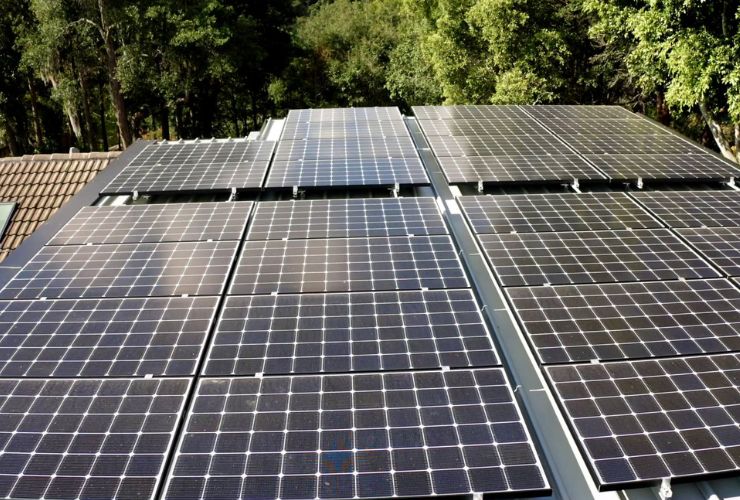Fast read
Determining the need and size of home storage batteries for a solar system depends on various factors, including electricity consumption patterns, blackout protection needs, and whether you are connected to the power grid.
Considering your daily energy consumption, especially from sundown to sunrise, and examining appliances' energy needs during outages can guide the battery size required. Existing solar systems' electricity export daily and time-of-use rates may also influence the decision.
To power your home overnight or during blackouts, assess your electricity usage and the appliances you plan to run during these times. For blackout purposes, calculate the energy required and choose a battery size accordingly (we show specific samples in the longer version below).
Can I add a battery to my solar system – and if so how many kWh?
This depends on several factors and considerations regarding whether you have solar or are getting a new solar and battery system, what you want to achieve from having batteries etc. Batteries come in a range of sizes and capacities, so rather than thinking about how many batteries I need, it is better to think about what size or capacity battery I need, How much electricity I need, and what I need to run from the battery.
To power your home at night, start by determining how much electricity your home consumes from sunset to sunrise. This is the time when your solar power system is not generating power. If you typically use 12kWh of electricity overnight, for example, this is a good place to start for self-consumption purposes. (electricity consumption data is usually shown at the back of your electricity bill and can vary per season – so use a full annual bill cycle as a reference)
Are you scared of blackouts?
If you worry about blackouts and want power during one, consider getting a home battery. Think about what you need to keep running and how long the outage might last.
To do this, look at the appliances you want to use, during the blackout such as the fridge, fan, modem, TV, radio etc. See what energy consumption each appliance needs to run for an hour. Then multiply this amount of Watts by how many minutes or hours you need to run the unit. That way you can calculate the energy required, which gives you a clear indication as to the size of the battery needed.

Adding a battery to an existing solar system
If you want to add a battery to an existing solar system, you will need to look at how much electricity you export daily. If you export 12kWh per day, do not use a battery with a capacity higher than that. This is especially true if you only plan to charge it with solar power.
Also available is the option to get a larger capacity than 12 kWh, but the difference would then be charged from the electricity grid. This makes sense if you have time-of-use rates, as then you can charge the battery when time-of-use tariffs are low around midnight, and release this power when they are costly like after 6 pm.
So in this sample, to fill the battery solely from your exported solar get a 10 to 12 kWh size unit, but if you seek to shift the time of use an even larger unit such as 14 kWh to 20 kWh could be considered for your home. You may find that your exported power varies at different times of the year, so this fact has to form part of the overall calculations.
You also need to consider whether the added battery will meet your home’s needs in the future when one or two EVs become part of the reality. One may find that one needs to increase the size of the solar system or upgrade it to provide enough power for the battery size required.
Is there a calculation I can do for myself?
Given the above factors, you can determine what size or capacity of batteries you want to add to your solar system situation.
- Average daily solar generation e.g. 40 kWh minus average energy consumption during the day e.g. 25 kWh = 15 kWh average exported electricity per day.
- Average electricity consumption in non-daylight hours is 15 kWh, therefore a battery size ranging from 12 to 18 kWh would be suitable to significantly reduce your electricity bill.
- During a blackout, use only essential energy. If you use 1.25 kW per hour, a fully charged 15 kWh battery will provide 12 hours of power at night. Your solar panels will help protect against blackouts during the day by using sunlight to power your home. This will save your battery reserves for when they are needed most.
Keep in mind that this basic calculation may not include factors like battery efficiency, depth of discharge, and system losses.
Let’s run past one more example of a family in Brisbane
Analyse your family’s energy consumption patterns, taking into account specific appliances, heating/cooling needs, and lifestyle. In Brisbane, cooling might be the most significant energy consumer, so focus on understanding your air conditioning usage.
1. Determine daily energy consumption:
- Analyse energy bills for the past 12 months.
- Find the daily average consumption in kWh on the back of the bill.
2. Sizing the Solar PV system for Brisbane
Brisbane typically enjoys around 5.2 full sun hours per day on an annual average. Our solar output calculator can also help to work this out for other parts of Australia as every postcode is catered for

3. Solar system sizing
- Divide the daily consumption e.g. in our sample 26kWh by 5.2 (average Brisbane sun hours) = 5 and multiply by 1.25 (inefficiency factor). = 6.25 kW. This is now the approximate size of the solar panel system in kW you need for your family.
Battery size for backup
- Multiply your hourly electricity consumption by the number of hours you want to have backup support. For example most times of the day the family is awake they use 1.5kW per hour, and they seek 10 hours of blackout protection, then a 15-17 kWh battery will do the job.
- Factor in the battery efficiency, which usually ranges from 85%-95%. This efficiency factor means that you lose electricity when you charge and discharge a battery. So if you fill the battery with 10kWh of solar power, you will most likely only be able to get 9 or 9.5kWh s back.
Another sample and variant on the calculations would be:
- Covering 100% of daily consumption for 2 days (a common choice): 26 kWh * 2 = 52 kWh
- With 90% efficiency: 52 kWh / 0.9 = approximately 58kWh needed.
- The solar system on average in 2 days produces 52 kWh
- Daytime consumption accounts for 18 out of the 26 kWh typically used in a 24-hour period, while nighttime consumption is 8 kWh (18 plus 8 equals 26).
- So if one seeks to use at night only the power out of the battery and takes efficiency losses and battery degradation over the years into account and a little for a rainy day, go for a 12 kWh or thereabouts battery.
Conclusion
So as you can see solar storage batteries can be a bit more complex than a simple solar system. Consulting with a solar energy professional who can analyse your specific situation is essential. They will assess factors like solar irradiance, roof angle, shading, local regulations, and more to provide an optimised system PV system and battery design tailored to your family’s needs. Watch for state and local incentives that can help make switching to solar and battery energy more affordable.



